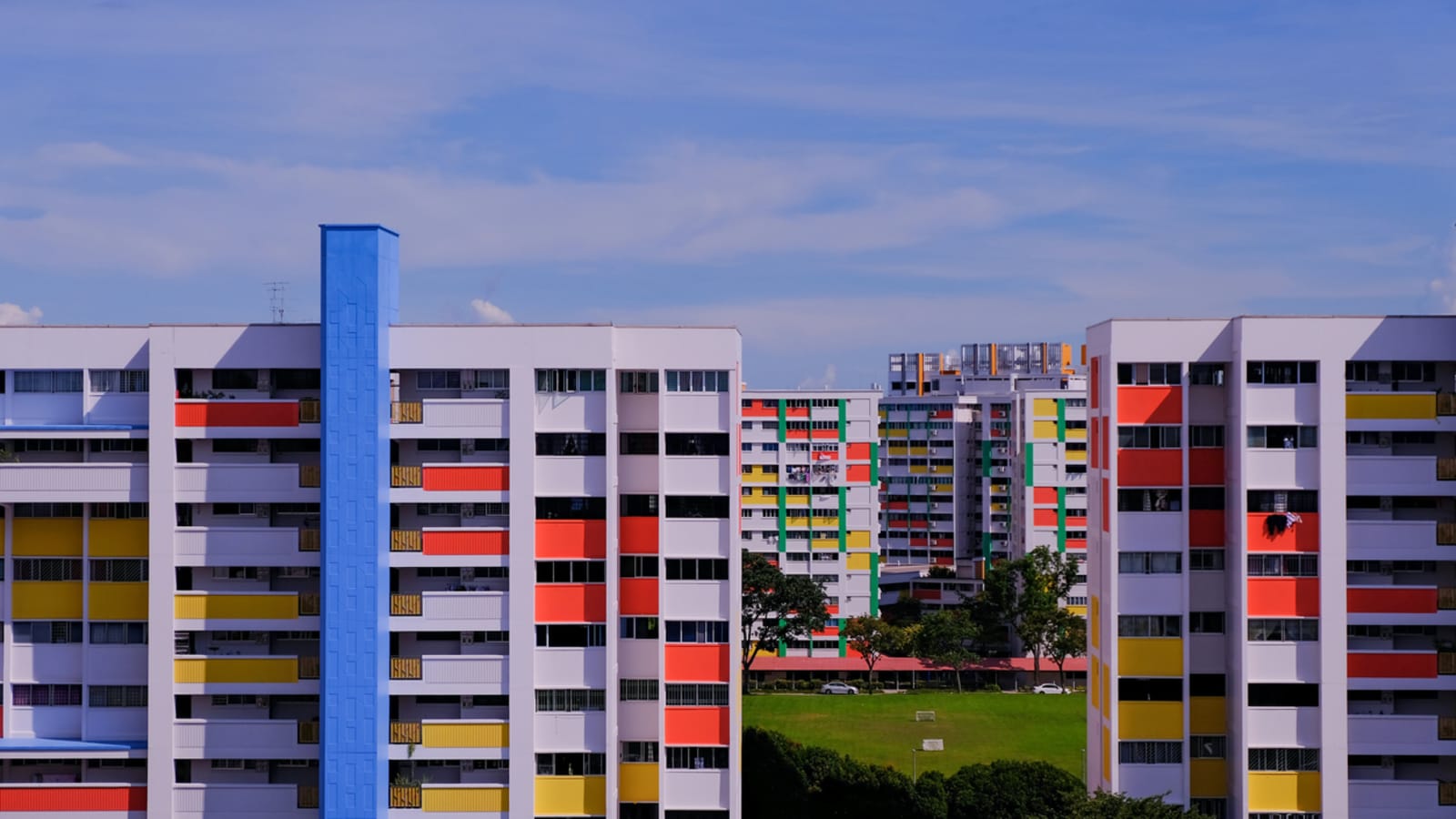
SINGAPORE: The stress of paying for a house seems to be rising in tandem with home loan interest rates, according to a bank’s financial survey.
But banks and analysts who spoke to CNA said mortgage foreclosures are rare in Singapore, and lenders said they would do their best to support those facing financial difficulties in a challenging economic environment.
A Financial Wellness Index report released by OCBC on Tuesday (Nov 22) found that 40 per cent of Singaporeans face “some difficulties in paying off their mortgage loans”.
This was an increase from 31 per cent of Singaporeans who faced such “mortgage stress” in 2021, said the bank.
“More Singaporeans are unable to pay their loans on time (14 per cent versus 9 per cent in 2021), with more indicating they would have to sell or downgrade their homes to pay their loans (8 per cent compared to 6 per cent in 2021),” said OCBC in a media release.
“This has resulted in more Singaporeans worried about home financing – 38 per cent worry about not being able to afford a home, an increase from 36 per cent last year.”
The index was based on an online survey of 2,182 working adults in Singapore aged between 21 and 65. It was conducted in August, when the three-month Singapore Overnight Rate Average (SORA) rose to 1.27 per cent.
Currently, the three-month SORA stands at 2.745 per cent.
In Singapore, a floating rate home loan is usually pegged to the Singapore Interbank Offered Rate (SIBOR), a Fixed Deposit Based Rate (FDR) or the Singapore Overnight Rate Average (SORA). But the first two are being phased out and the floating interest rate will soon be pegged only to SORA.
On Nov 15, OCBC, DBS and UOB banks raised their fixed home loan interest rates to up to 4.5 per cent.
In essence, a fixed home loan has interest rates that remain unchanged throughout the lock-in period. A floating loan’s interest rates vary throughout the life of the loan, depending on the economy and market conditions.
Despite the interest rate hikes, Minister of State for Trade and Industry Alvin Tan said in Parliament in October that the Singapore household debt situation was “generally healthy”.
As of the second quarter of 2022, there were fewer than 30 units seeing foreclosure, said Mr Tan, who is also a board member at the Monetary Authority of Singapore.
DEFAULTING ON HOME LOANS “NOT VERY COMMON”
At DBS, the bank has not seen “delinquencies owing to higher home loan interest rates”, a spokesperson told CNA.
“That being said, the bank already has measures in place to help our customers manage their home loan repayments in the event of unexpected financial difficulties,” said the DBS spokesperson.
“We may review our customers’ loan terms and explore options that can support their affordability, such as extending their loan tenors which would help bring down the cost of monthly repayments.”
DBS added that it recently launched a POSB HDB home loan which offers an interest rate of 2.6 per cent per annum, similar to the current Housing and Development Board concessionary home loan rate. This is to “help eligible borrowers who earn less than S$2,500 a month tide over inflation and rising home loan interest rates”.
A spokesperson for UOB said the proportion of borrowers at their bank impacted by rising interest rates was “insignificant compared to the total mortgage portfolio of the bank”.
“UOB will do our best to assist customers facing difficulties with their loan repayments,” the spokesperson said. “We will speak to them to gain a better understanding of their individual situations, and propose options catered to their specific circumstances.”
On the homebuying front, property analysts told CNA that based on anecdotal conversations with agents, it is “not very common” to see individuals struggle with repaying their mortgage – even during the pandemic.
“This may indicate that the Total Debt Servicing Ratio (TDSR) computation and other property measures like Additional Buyer’s Stamp Duty (ABSD) and Seller’s Stamp Duty (SSD) may be effective as safeguards to prevent overleveraging in general,” said Ms Christine Sun, senior vice president of research and analytics at OrangeTee and Tie.
“As long as the homeowners can pass the TDSR stress test, they should be able to pay their mortgages.”
Property cooling measures announced on Sep 30 saw an increase in the medium-term interest rate floor from 3.5 to 4 per cent for property loans from private financial institutions, tightening the criteria to assess a borrower’s ability to repay the loan.
The medium-term interest rate floor is used to compute TDSR and the mortgage servicing ratio (MSR).
TDSR refers to the portion of a borrower’s gross monthly income that goes toward repaying the monthly debt obligations, including the loan being applied for. MSR applies to loans for HDB flats.
Ms Sun thinks many homeowners are now taking up a combination of fixed and floating interest rate packages – which gives them the “flexibility to change their package when interest rates drop in the future, but they are still able to enjoy some form of stability when interest rates continue to rise”.
HAVE SUFFICIENT “BUFFERS”
Banks and analysts advised homeowners to always leave a “buffer” for unforeseen circumstances, regardless of interest rate trends.
“As an ideal starting point, one should set aside some savings in cash or liquid assets that can be used to pay for their monthly home loan instalments for the next two years, in addition to at least six months’ worth of expenses,” said the DBS spokesperson.
“This would allow sufficient time to restructure the loan, or even sell the property should they run into any financial issues.”
Acknowledging that different potential homeowners have different needs, Ms Linda Lim, manager of corporate sales at One Global Group, said salespersons will encourage potential buyers to do an In-Principle Approval (IPA) and undertake a detailed financial calculation of their available funds.
An IPA calculates an individual’s maximum bank loan eligibility with more precision and enables homeowners to be “more optimistic” when budgeting.
Key elements to note when applying for a home loan include the loan contract expiry date which is necessary for refinancing purposes, total combined household incomes, total liabilities as well as affordability gauged against monthly loan repayment amount, said Ms Lim.
Potential homeowners can also factor in a higher interest rate in their financial calculations to “prevent future shock” in case interest rates climb, she suggested.
“For example, base it on a 3 per cent interest rate if the current interest rate is 2.6 per cent; if the interest rate is 4.2 per cent, base it as 5 per cent,” she said.
“Furthermore, potential home buyers (should) set aside a reserve fund, whether through cash or CPF. This is to ensure that they will still have a reserve fund to fall back on if the potential homeowners lose their jobs.”
STRATEGIES FOR THOSE STRUGGLING
Nonetheless, should homeowners face financial difficulties, banks and analysts suggested the following strategies for consideration.
For starters, explore refinancing or repricing the loan, said PropertyGuru Finance’s vice president Paul Wee.
Struggling homeowners can also explore ways to increase cash flow and disposable income, such as renting out a room, taking up part-time jobs or “dropping all non-essential expenditure”, said the banks and analysts.
Approaching the bank early to discuss repayment options is another route for those struggling to meet their mortgage loans.
Individuals who wish to negotiate the interest rates and the repayment terms on all credit facilities, including the mortgage loan with banks, should be “candid” about their challenges faced, Mr Wee advised.
“Some of the restructuring options that we offer to help lower monthly commitments include an extension of loan tenor or committing to a debt repayment plan,” added the OCBC spokesperson.
UOB similarly said that options include loan repricing, restructuring or extending tenors – subject to regulatory requirements.
“For HDB loans, the bank may also refer individuals who wish to right size their home to HDB for assistance,” said the spokesperson, pointing out that all HDB homeowners, regardless of whether they have taken a HDB or bank loan, can be covered under the Home Protection Scheme.
The Home Protection Scheme is a mortgage-reducing insurance that will help to cover the outstanding housing loan in the event of death, terminal illness or total permanent disability.
Mortgage foreclosures, if any, will only be considered after all other avenues have been exhausted, OCBC and UOB explained.
In some circumstances, individuals could also consider selling their unit to “reduce their liabilities”, suggested chief commercial officer at One Global Group, Clarence Goh.
“Banks will grant a certain time period to allow homeowners to sell their properties themselves. If the owners are unable to sell their property within a stipulated time period, the banks will repossess the units,” he said.
A potential option is through the auction method of sale, where salespersons work with banks to put up properties under bank sale. This usually happens when a homeowner defaults on their mortgage loans, added Mr Goh.
Finally, struggling individuals can consider turning to Credit Counselling Singapore, a charity which supports “debt-distressed” individuals, said PropertyGuru’s Mr Wee.

